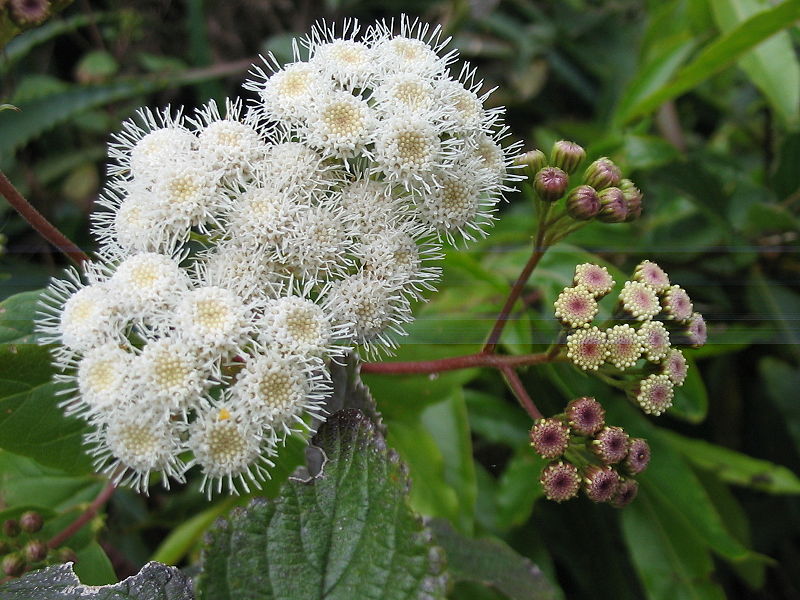Weed Words by Triny Roe
(From The Nimbin GoodTimes, August 2017)
In the Winter of our Discontent is the time to hit the Crofton Weed, Ageratina adenophora.

This prolific weed will be beginning to develop flowers this month so get onto it soon. Crofton is easily hand pulled as the roots are fairly shallow. Removal of this pest species now will make room for more desirable species to germinate in the future and flourish as Spring approaches. Removal before it is in full flower in October will go a long way to reducing the seed bank.
If untouched for a few years, crofton develops large clumps which may need loosening with a fork if a little stubborn. A few years of strategic weeding will see a reduction in population.
Crofton was first identified as an invasive weed in the Lismore Shire in the 1920s. It takes its common name from a councillor whose land it first colonised. Crofton was brought from Sydney by a neighbour as a lovely flowering garden plant.
This pretty plant spread from there throughout Northern NSW and SE Queensland. In the 1950s, dairy and banana farms were abandoned as the aggressively growing weed took over, displacing pasture and decimating productivity.
In Nepal they call it ‘killer of forests’ as it competes with forest regrowth. Horses will eventually sicken and die after continued exposure.
Cattle are not similarly affected but won’t graze it if there’s plenty of grass available. It is of moderate palatability to goats so these could be used in a management program. Roots will still need removing as they will simply reshoot next season. Slashing just makes more and bigger plants as cut stems laying on the ground readily root and shoot again in a high rainfall season.
If bush regeneration is your aim, wild raspberry – Rubus rosifolius might first take its place, providing habitat and food for native bird species.
Tree species such as sally wattle – Acacia melanoxylon, red kamala – Mallotus philippensis, red cedar – Toona australis, the cheese tree – Glochidion ferdinandi, and native tamarind – Diploglottis australis will all readily germinate and shoot upwards through the scrambling ground cover. A wet winter means plenty of groundwater available and there’s hopefully good seed bank remaining in the soil for natural recruitment.
The April deluge courtesy of Cyclone Debbie, wreaked havoc on the waterways and hillsides of the Lismore shire and beyond. Plenty of local creek banks need attentions and remediation as well as landslips on steep slopes. Keep a close eye and monitor these locations as new weeds will appear, washed down from upstream or overland.
Looking after land is an important responsibility. Managing the weeds is a big part of it. Especially in the Northern Rivers with its high rainfall and sub-tropical temperatures. Everything grows bigger and faster here.
Reduce your workload by keeping an eye out for new incursions and get them while they are small.
Be alert for groundsel – Baccharis halimifolia and giant devil fig – Solanum chrysotrichum coming to a paddock, creek bank or roadside near you. Common on old cattle or banana farms, these aggressive woody weeds will quickly entrench creating a huge problem down the track if not attended to promptly.
Both species are classified as noxious so land holders have an obligation to deal with them. You have to do them sooner or later so you might as well do them sooner.
A vegetation survey is money well spent when purchasing land. If it all looks lush and green, ask an expert. Know your weeds and other plants and how they behave. Develop a
strategic weed management plan and enjoy your ‘lifestyle property’.
Happy weeding

 Follow
Follow